The day a family finally brings their child home from the hospital is life-changing. After a stressful journey, the entire family feels a barrage of emotions: relief, excitement, joy and happiness.
These photos by Scott Streble were taken before the pandemic, during team training at our partner hospital in Coimbatore, India (G. Kuppuswamy Naidu Memorial [GKNM] Hospital). Since then, even though discharge routines have changed and a parent’s smile is hidden under a mask, a family experiences the same emotions.

Sivanya is ready to go home just 3 days after her surgery! Her small chest scar is almost invisible. She has a good appetite–one of the signs of recovery.
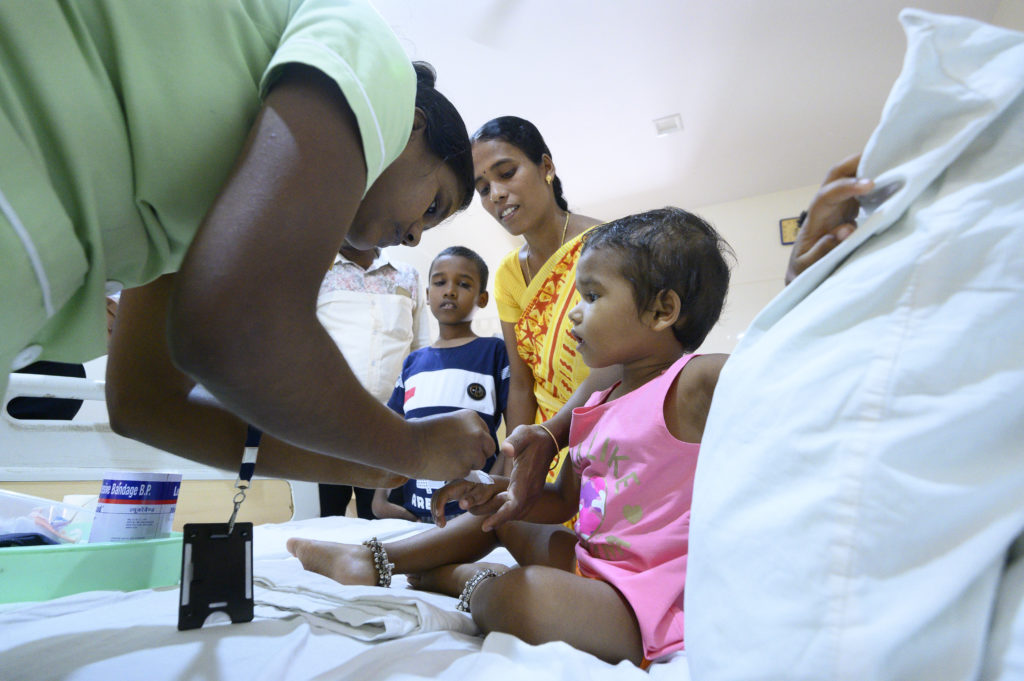
The nurse is removing a PICC line (a catheter). It’s inserted in the vein to deliver medications during the hospital stay and to avoid multiple needle sticks. Sivanya was diagnosed 9 months before her operation. She was referred to GKNM Hospital by her pediatrician who suspected heart disease because of an infection.

Sivanya’s mother is a nurse, and she knows how to take care of her daughter after surgery.
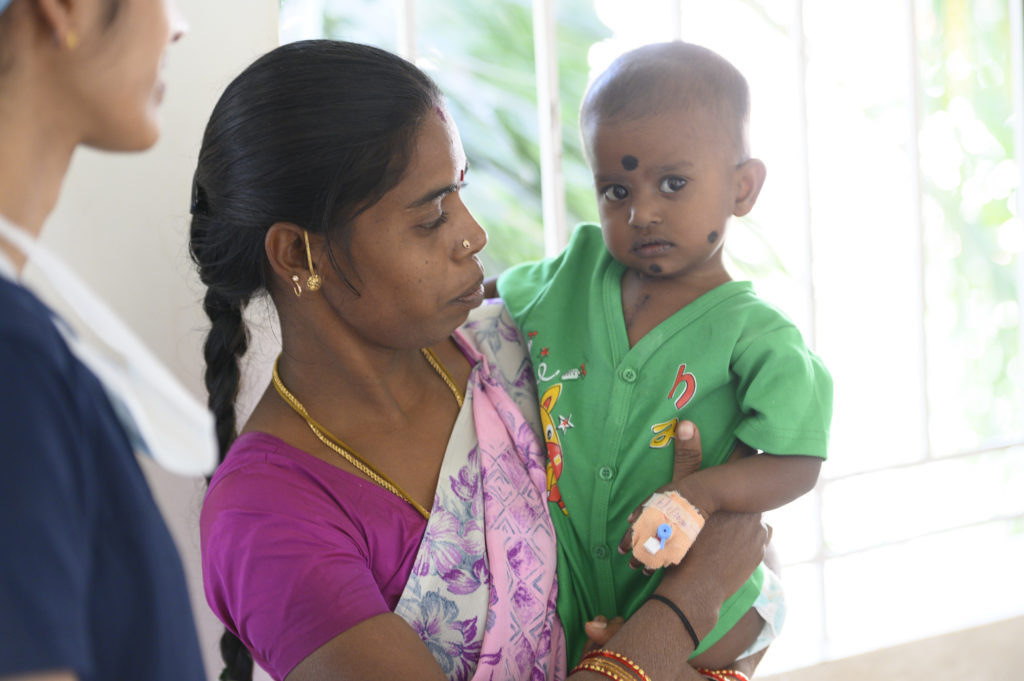
Kavinaya is also getting ready to leave the hospital. Before the surgery, her blood oxygen level was very low–in the 60s. Look at her now! Her recovery took just 4 days. The same day she had surgery the nurses removed the tube that helped her breathe during surgery. She spent only 1 day in the intensive care unit.
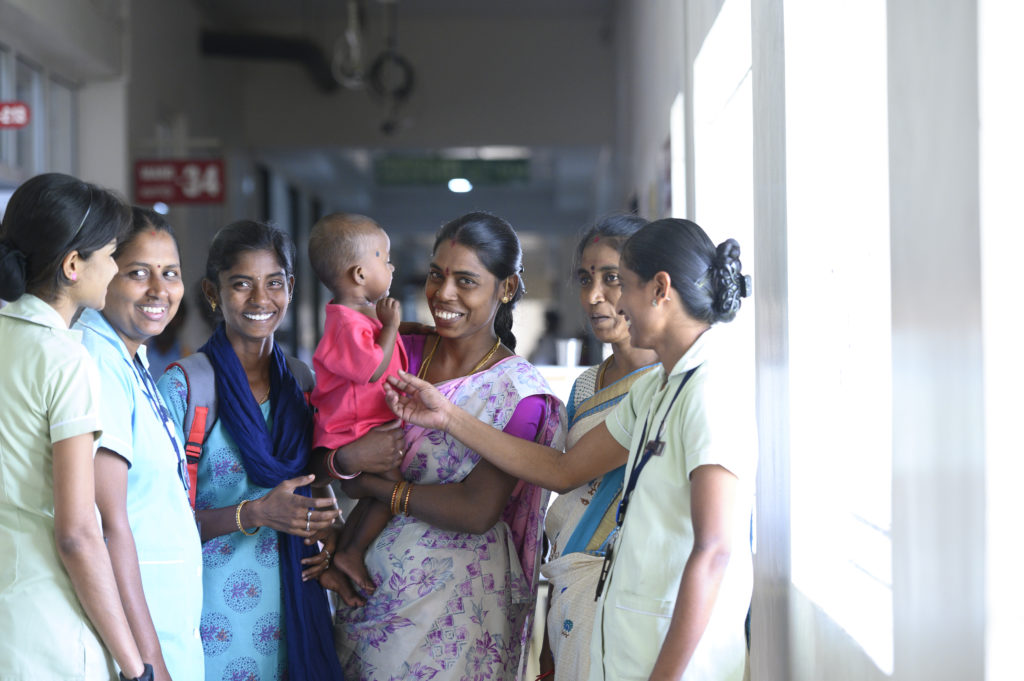
Kavinaya lives with her mother and grandparents in a rural area 6 hours from the hospital. Her family members do farm labor or work wherever they can find a job. Kavinaya was diagnosed with heart disease before birth, which is not commonplace in India.

Kavinaya and her entourage, going home.
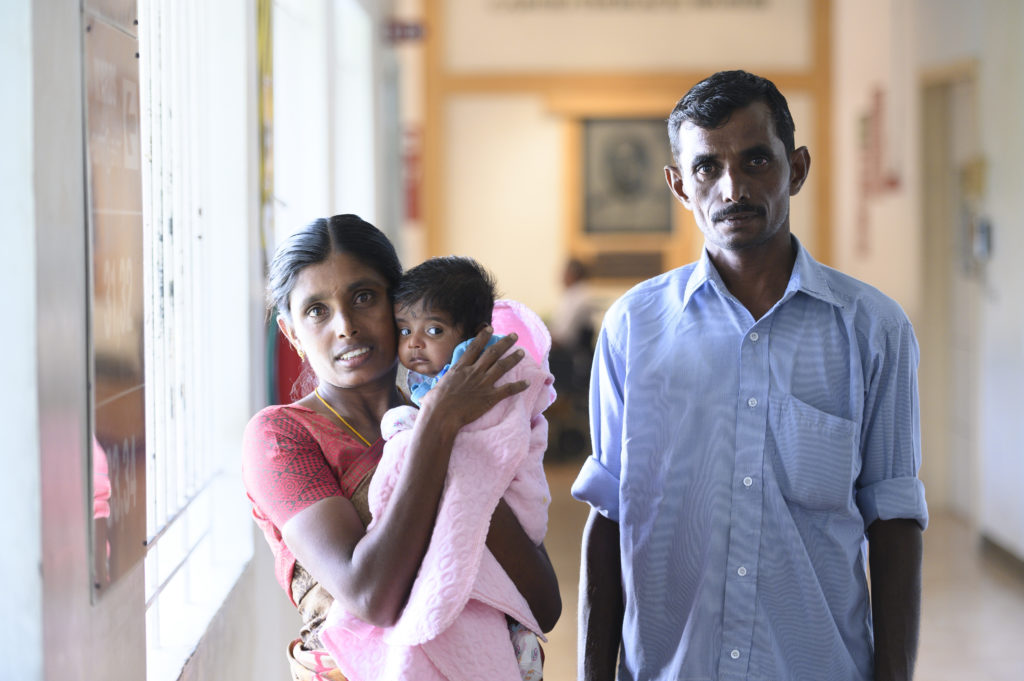
Baby boy Kabil was discharged a week before this photo was taken. His family brought him back for a follow-up appointment with surgeon Dr. Vijay. He is 3 months old here, and he weighs just over 6 pounds. Dr. Vijay says that it will be hard to recognize this baby in a few months because he will begin to thrive. Kabil already has a good appetite.
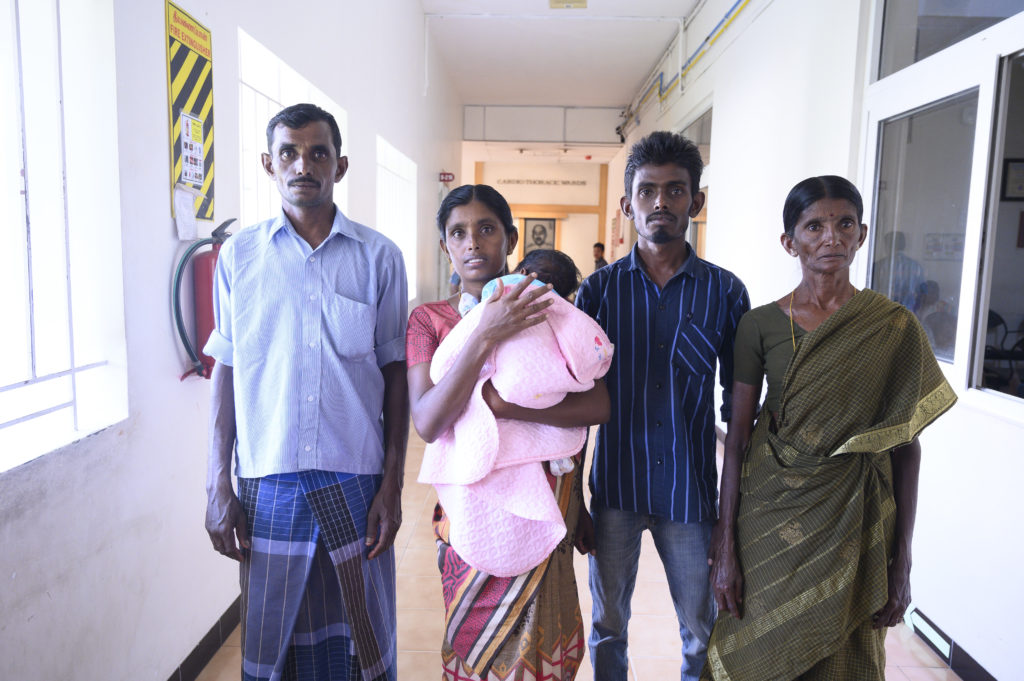
As his cardiac program advances because of training from Children’s HeartLink, Dr. Vijay says the program needs to increase its focus on education for parents and other family members who care for the child after surgery. When Kabil was in the hospital, his father (on the left) had to go back to work on the farm. Kabil’s uncle (second from the right) stayed at the hospital and helped Kabil’s mother take care of him. “Family support is key. If somebody is sick, the entire family from both sides comes to help. It’s the way things are done in India,” says Dr. Vijay.
Children’s HeartLink saves children’s lives by transforming pediatric heart care in underserved parts of the world. Founded in 1969, we currently support 18 partner hospitals in Brazil, China, India, Malaysia and Vietnam. Last year alone, the medical providers we trained served 177,000 children with heart disease, more than ever before.
